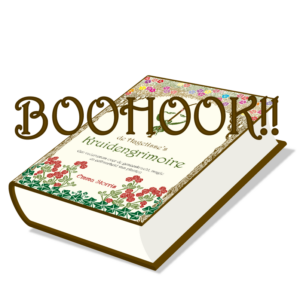
As you can see from the Latin name Artemisia vulgaris, mugwort is related to wormwood. Compared to wormwood, mugwort contains significantly less thujone. Therefore, this is a plant that is less likely to cause side effects than wormwood.
The reason I include a second plant from this family in my plant books is because each of them has specific benefits and I enjoy working with both. In addition, if one is not around, you can always search for the other. My vademecum would not be complete without both plants.
When it comes to medicinal properties, mugwort is somewhat similar to wormwood, although there are differences as well. For example, in addition to the broad and beneficial effect on digestion this plant has a positive effect on kidney performance. Artemisia vulgaris helps regulate menstruation and is a nerve herb that according to folk medicine can be used against epilepsy.
Magically speaking, mugwort is more versatile than wormwood. In addition to its vast number of uses in sympathetic medicine, it is a well-known divination herb. Many know mugwort as an ingredient of witches’ ointment or flying ointment. This unassuming plant can assist women who are pregnant or giving birth. Mugwort is also a helpful ally in both Midsummer Magic and Moon Magic.
Mugwort stands on a woody rhizome. This rhizome is the part that hibernates, the rest of the plant dies off in winter. Mugwort sprouts again in the spring.
The furrowed, red to purple-red stems are woody, which is why mugwort sometimes resembles a shrub. This effect is enhanced by its size and by the strong branching of its stems. It often grows up to 1.5 metres high, sometimes even higher.
On the stem you will find leaves that are scattered and pinnatipartite with deeply serrated slips. The leaves are often bipinnate at the bottom and single pinnate towards the top. The leaves are smooth and green on top and greyish white and pannose underneath.
The inflorescences are leafy plumes with small flowers on top. The plumes have a white, pannose appearance. The flower has protruding yellowish stamens that turn reddish brown later.
Mugwort spreads pollen that is highly allergenic. Mugwort is no favourite amongst people who suffer from hay fever.
Beekeepers use mugwort to prevent bees from swarming.
Mugwort repels mosquitoes and moths. The English folk name mugwort and the Dutch muggerik are reminders of this.
You can use the fibres of this plant as tinder.
Basic membership is free. A plant monograph contains:
It's not allowed to copy content of this website
and view hidden content
